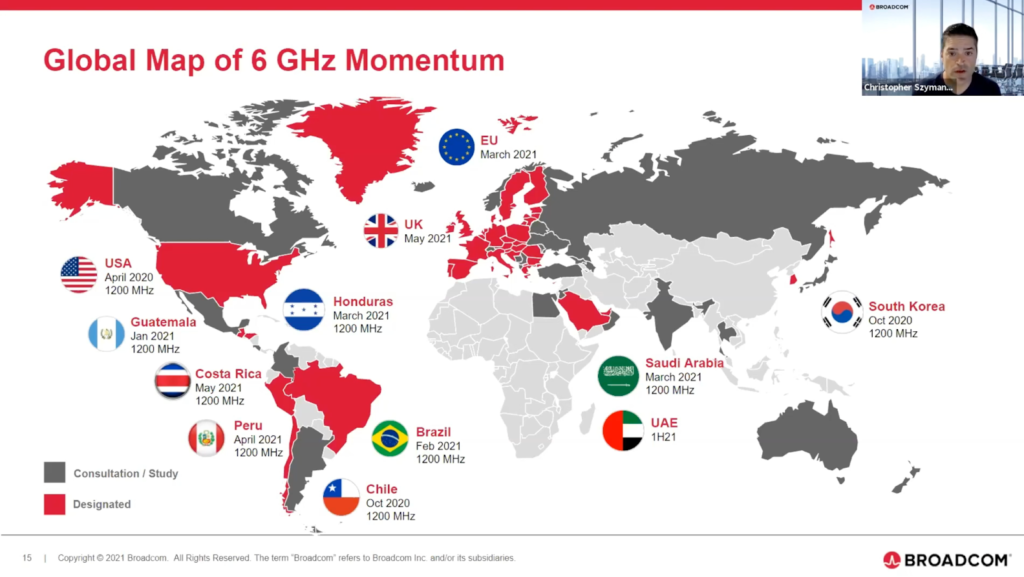It’s been over a year since the FCC unanimously voted to open the 6 GHz band for Wi-Fi use. So, what’s happened since that decision? And what does the future look like for Wi-Fi?

This week, WifiForward hosted its fifth episode in the Wi-Fi At Work series where Broadcom Director of Product Marketing Chris Szymanski talked about the global impact of the FCC’s decision on the 6 GHz band and what that means for the next decade of Wi-Fi.
Szymanski started with a brief recap of the last 12 months, which began with the U.S. bringing 1,200 MHz of new spectrum to the market, tripling the available spectrum for unlicensed indoor operation. Since then, the industry has moved quickly to create devices and access points to take advantage of this new spectrum — a class of Wi-Fi called Wi-Fi 6E. “Industry has been incredibly active,” Symanski said, noting that the Wi-Fi Alliance has certified close to 30 Wi-Fi 6E devices with more to come.
Recognizing the benefits of this new class of Wi-Fi, nations worldwide are moving to open up part or all of the 6 GHz band for unlicensed use. From Saudi Arabia to Peru to most recently Costa Rica, regulators are moving to support Wi-Fi 6E with new spectrum designations. In fact, according to Syzmanski, “about 42% of the world’s economy has either opened the entire 6 GHz band or are contemplating it.”
And that’s not to mention the next class of Wi-Fi devices coming down the pike called Wi-Fi 7. But, what does this mean for the future of Wi-Fi? Szymanski noted “countries that haven’t opened up the 6 GHz band aren’t really going to derive the true benefit of Wi-Fi 7 [because] most of the innovation is happening in the 6 GHz band.” And while it may seem crazy to be talking about Wi-Fi 7 when we’ve only just gotten started with Wi-Fi 6 and Wi-Fi 6E, Szymanski concluded the webinar saying he “expect[s] Wi-Fi 7 to start rolling out towards the end of 2023… [and] we’re very excited about it.”
You can watch the whole webinar here.
